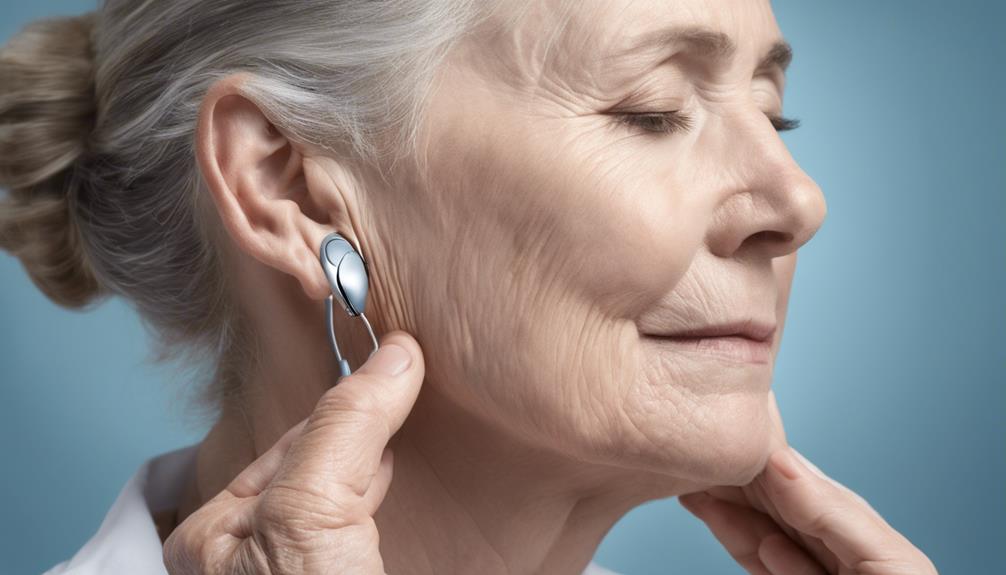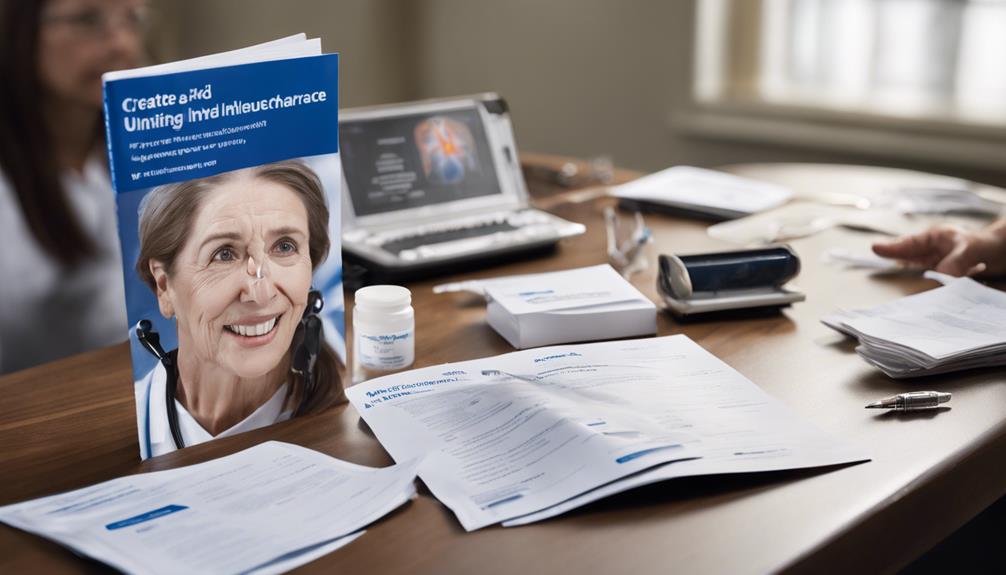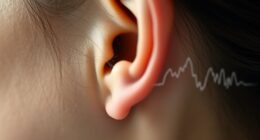Have you considered how advancements in modern hearing aids could potentially change your perception of sound?
The evolution of technology in this field has led to groundbreaking developments that are reshaping the way we perceive sound.
From cutting-edge directional technologies to AI-driven personalized sound adjustments, these innovations are designed to offer a truly immersive and tailored hearing experience.
But how exactly do these enhancements work, and what benefits do they bring to users seeking improved clarity and comfort in their daily lives?
Key Takeaways
- Bluetooth connectivity elevates phone calls and music streaming.
- AI and machine learning personalize sound for optimal clarity.
- Extended battery life ensures reliable daily performance.
- Tailored designs and tinnitus relief enhance comfort and usability.
Bluetooth Connectivity for Seamless Integration
Bluetooth connectivity in hearing aids revolutionizes the way users interact with electronic devices, offering seamless integration for enhanced communication and entertainment experiences. This technology allows individuals to stream phone calls and music directly to their devices, providing a more immersive listening experience.
By eliminating feedback from the microphone, Bluetooth enhances overall sound quality and clarity, making conversations and music more enjoyable. Additionally, many modern hearing aids come equipped with smartphone apps that enable easy volume adjustment and customization of settings, empowering users to tailor their hearing experience to their preferences.
The direct connection to electronic devices further enhances the support and functionality provided by hearing aids, ensuring that users can fully engage with their surroundings. With Bluetooth connectivity, users can effortlessly connect to a variety of devices, enhancing their overall quality of life through improved communication and entertainment options.
AI and Machine Learning for Personalized Sound

Utilizing AI technology and machine learning algorithms, modern hearing aids are now capable of providing personalized sound adjustments in real-time, tailored to individual preferences for an optimized listening experience. AI sound optimization enhances speech intelligibility by analyzing audio signals and reducing background noise, resulting in improved clarity for users. These personalized adjustments mimic natural sound perception, ensuring that each individual's specific needs are met.
Furthermore, the continuous evolution of AI advancements in hearing aids aims to enhance the overall user experience by fine-tuning sound settings and providing ongoing support. By adapting to the user's preferences and environment, these intelligent systems offer a more customized and comfortable listening journey. With personalized sound adjustments driven by AI and machine learning, individuals can enjoy a tailored auditory experience that caters to their unique requirements, ultimately improving their quality of life through enhanced hearing capabilities.
Extended Battery Life for Continuous Usage
With the advancement of technology, modern hearing aids now boast an extended battery life of up to 16-20 hours per charge, ensuring uninterrupted usage throughout the day. Rechargeable batteries in these hearing aids provide a level of convenience similar to wireless earphones, eliminating the hassle of frequent battery replacements. The longer battery life addresses the issue of limited battery capacity in traditional hearing aids, offering improved usability for users. Additionally, overnight charging options make it easy for wearers to maintain a consistent power supply, enhancing the practicality of using hearing aids.
Faster charging features in rechargeable hearing aids contribute to a more seamless user experience, ensuring reliable performance for daily use.
- No more worries about battery replacements
- Enjoy continuous usage with extended battery life
- Convenience of overnight charging for hassle-free power supply
- Seamless user experience with faster charging features
Tailored Designs for Lifestyle Adaptability

Advancements in hearing aid technology not only provide extended battery life but also offer a range of tailored designs to match diverse lifestyles and preferences.
With the latest advancements in hearing aids, wearers can choose from various styles to accommodate active lifestyles, discreet preferences, and even waterproof needs. These multiple design options ensure a personalized fit for every user, promoting greater satisfaction and usability.
Whether individuals seek a hearing aid that aligns with personal tastes or prioritizes comfort, the diverse choices in hearing aid styles make it easier to find the perfect match.
From rechargeable batteries to noise reduction features, tinnitus technology, directional microphones, and other advanced technologies, different types of hearing aids offer options for various activities and environments. This adaptability enhances listening comfort and overall convenience, allowing users to seamlessly integrate their hearing aids into their daily lives.
Tinnitus Relief Features for Comfort
Individuals experiencing tinnitus symptoms can find comfort and relief through the tinnitus masking features integrated into modern hearing aids. These advanced technologies emit sounds to alleviate tinnitus, providing personalized relief through tailored management programs.
Specifically, Lyric hearing aids are uniquely designed for continuous wear, offering round-the-clock relief from tinnitus discomfort. Moreover, compatible apps give users the ability to control masking noises such as white noise, empowering individuals to manage their tinnitus symptoms effectively.
Frequently Asked Questions
What Are the Latest Improvements in Hearing Aids?
We've seen incredible advancements in hearing aid technology recently. Directional technologies and speech enhancement focus on amplifying speech signals and reducing background noise.
Bluetooth connectivity allows seamless connection with mobile devices, improving communication for users. Noise reduction algorithms suppress unwanted noise, enhancing speech intelligibility.
Tinnitus masking features improve the quality of life for those with tinnitus. AI sound optimization adjusts in real-time, enhancing speech clarity and adapting to individual preferences.
What Is the New Technology in Hearing Aids 2023?
We've seen significant advancements in hearing aids for 2023. New technologies include:
- Directional features enhancing speech clarity.
- Bluetooth connectivity for seamless phone integration.
- Advanced noise reduction with AI algorithms.
- Tinnitus relief functionalities.
- Personalized sound adjustments in real-time.
These innovations aim to provide a tailored and improved hearing experience. They focus on reducing background noise, enhancing speech intelligibility, and optimizing sound perception for individual preferences.
What Are the New Advancements in Hearing Loss?
We've witnessed incredible advancements in hearing loss management. Groundbreaking technologies like directional features and noise reduction algorithms are transforming how we perceive sound.
These innovations, akin to a symphony conductor, orchestrate a clearer, crisper auditory experience. Through Bluetooth connectivity and AI sound optimization, our hearing aids are now finely tuned to our individual needs, offering superior speech intelligibility and minimizing background noise to enhance our quality of life.
What Is the New Hearing Aid Technology 2024?
In 2024, the new hearing aid technology integrates advanced directional technologies and speech enhancement to focus on sounds from the front, enhancing speech intelligibility in noisy environments.
Bluetooth connectivity and wireless features eliminate feedback, improve signal-to-noise ratio, and enhance communication with mobile phones.
Cutting-edge noise reduction technologies employ deep learning algorithms to suppress unwanted noise and improve speech clarity.
Tinnitus masking features aim to improve the quality of life for those with tinnitus.
Conclusion
In conclusion, these latest advancements in hearing aids have truly opened up a new world of sound for us. With Bluetooth connectivity, AI technology, extended battery life, tailored designs, and tinnitus relief features, our hearing experience has been enhanced like never before.
It's like having a personal orchestra playing just for us, tailored to our every need and lifestyle. Embrace these innovations and enjoy a symphony of sound in your everyday life.











